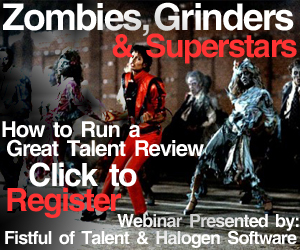The Trends Shaping Global People Management, and One That Isn't
Recently the Boston Consulting Group published a report and research study titled 'Creating People Advantage 2012: Mastering HR Challenges in a Two-Speed World', a look at the most pressing and important trends and issues in Human Capital Management gleaned from their survey and interviews with over 4,000 HR and Business Executives from over 100 countries. You can access the full 59-page PDF report here.
Take a look at the summary chart below - you probably won't be too surprised by the three most important HCM topics as defined by 'High' Future Importance to the organizations, coupled with 'Low' Current Capability in that discipline.

In case you can't figure out the chart, (it took me a minute), the three topics that fell in the red or 'Strong Need to Act' zone were:
Managing Talent - Ok, kind of generic, but I guess it makes sense
Improving Leadership Development - Sort of a perennial issue in most organizations, but as the report details, becoming more acute due to demographic reasons, (the aging workforce, mainly)
Strategic Workforce Planning - Most organizations reporting ongoing difficulty in adequately forecasting short and long-term talent needs
So taken together, not all that surprising I guess, we have been hearing and reading about these trends and critical areas of focus for HR and Talent professionals for some time now. We need to get smarter at understanding our people, at developing them for future leadership roles, and more precisely planning for our future talent needs.
Basically, we need to just get better at our jobs. Sounds like a sound bite from the press conference of every losing football coach ever.
But what stood out to me from the report was not the three 'red' items, but rather the one topic out of 22 that registered on the opposite end of the scale - at the bottom of the scale in capability but also rated as least important in the long term, namely 'Actively Using Web 2.0 for HR.'
What?
Applying the latest in social, particiapatory, collaborative, and modern technology to improve HR and Talent Management rated dead last?
Even 'Improving Employer Branding' (which hardly anyone even understands), rated more important?
I have to say even though I would not have expected a really geeky, technical sounding function or topic like 'Web 2.0' (and please, BCG can you drop that term, it fell out of fashion in 2009), to register above most of the more traditional and familiar HR and Talent focus areas, to see it rank last in future importance by so many Global HR leaders is a little concerning and sad.
As a proponent of workforce technologies and as someone who knows the impact that the application of collaborative and social technologies can have to help address almost ANY of the topics on the BCG survey, I hope that these results are not truly indicative of how HR pros see these tools and their potential.
What are you seeing in your organization - are the new tools and technologies on your radar in HR?

 Steve
Steve




